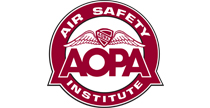Old and bold
CEN11LA086
 By David Jack Kenny
By David Jack Kenny
Like most clichés, the adage about there being “no old, bold pilots” overstates things just a bit. A pilot of venerable age can still be a little too confident, regardless of whether all those years were spent racking up flight time or pursuing other ends.
On Nov. 30, 2010, a Maule M5 approached a grass strip on the pilot’s property near Emory in northeast Texas. A witness about a quarter-mile away saw it bounce twice attempting to touch down in gusty crosswinds, and then begin to climb out as power was increased for the go-around. At about 100 feet above the ground, the airplane apparently stalled; the left wing dropped, and it spun into the ground in a near-vertical attitude. The solo pilot was killed, and fire consumed the airplane so completely that most of its aluminum parts melted down, leaving only the steel frame tubes to outline its shape.
The 80-year-old private pilot held single-engine, multiengine, and instrument ratings. He had received a third-class medical certificate that April, claiming 1,300 hours of total flight experience on his application, and bought the Maule in July. According to his son, he hadn’t put a lot of time on the airplane in the four months since—and hadn’t flown at all for the preceding 25 years. He also hadn’t accumulated much experience operating from the rough 2,000-foot grass strip.
The morning of the accident, the pilot made a short flight northwest to Bonham to have lunch with a friend. After lunch, he decided to make another short hop across the border into Oklahoma, where he intended to buy some Christmas presents in Durant. In a subsequent phone conversation with his son, the pilot expressed concern about the return flight because of the high winds at both Durant and Emory, but apparently he decided to go ahead and give it a try.
“Let’s give it a try” tends to be a less-than-ideal strategy for risk management, and there were alternatives. The pilot’s son did not tell investigators whether there was any urgent reason his father needed to get home that day, so it’s not clear whether staying in Durant might have been an option. If not, the airports at Greenville and Sulphur Springs, each 22 miles from the pilot’s home, offered paved runways of more than 5,000 feet, though at both the crosswinds would still have been stiff and gusty enough to challenge a somewhat rusty tailwheel pilot. If nothing else, Durant is only about 100 miles from Emory by road. The airport offers rental cars, and Texans are known to drive farther than that to attend high-school football games. With the winds gusty and unpredictable—according to archived METARs, those at the airports blew from a direction almost opposite that which witnesses reported at the accident scene—this might have been the best plan.
Having inactive pilots return to flying is one of the most promising ways to arrest the well-publicized decline in the pilot population, and age should be no impediment as long as a pilot remains fit and healthy. We like to believe that accumulated wisdom will help make up for any physical decline due to aging. Still, occasionally we’re reminded that neither years on the calendar nor hours in the logbook provide absolute protection from the lapses in judgment than can be so unforgiving in the air.